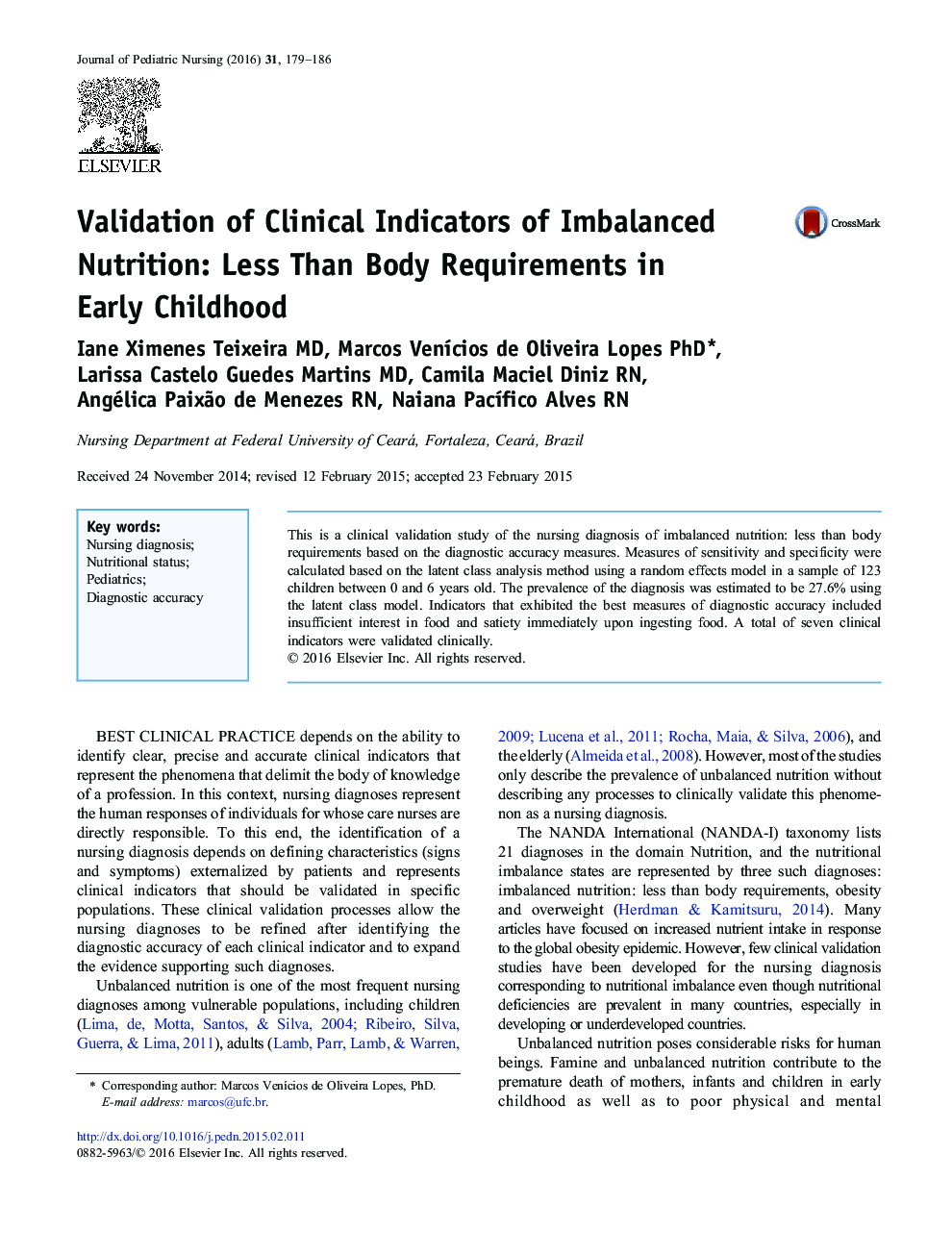| Article ID | Journal | Published Year | Pages | File Type |
|---|---|---|---|---|
| 2664103 | Journal of Pediatric Nursing | 2016 | 8 Pages |
•The study examines clinical indicators in early childhood to clinically validate the nursing diagnosis of Imbalanced nutrition: less than body requirements.•Seven indicators that exhibited best measures of diagnostic accuracy based on latent class analysis with random effects.•Some differences in measures of diagnostic accuracy were observed for gender, age, and length of stay
This is a clinical validation study of the nursing diagnosis of imbalanced nutrition: less than body requirements based on the diagnostic accuracy measures. Measures of sensitivity and specificity were calculated based on the latent class analysis method using a random effects model in a sample of 123 children between 0 and 6 years old. The prevalence of the diagnosis was estimated to be 27.6% using the latent class model. Indicators that exhibited the best measures of diagnostic accuracy included insufficient interest in food and satiety immediately upon ingesting food. A total of seven clinical indicators were validated clinically.
